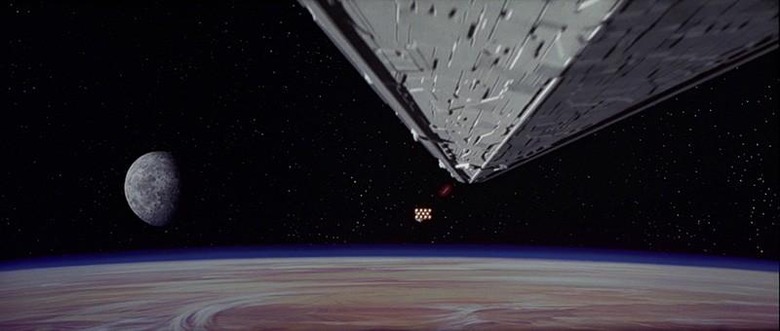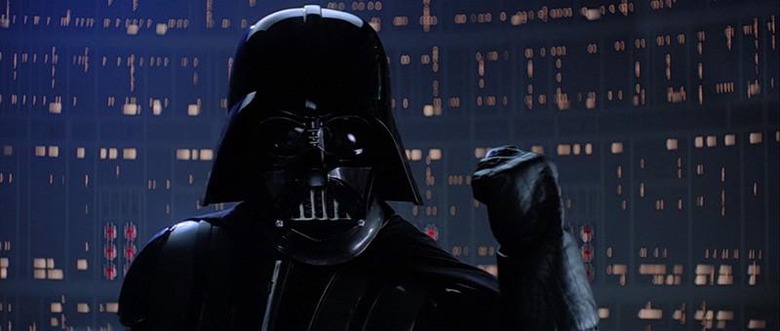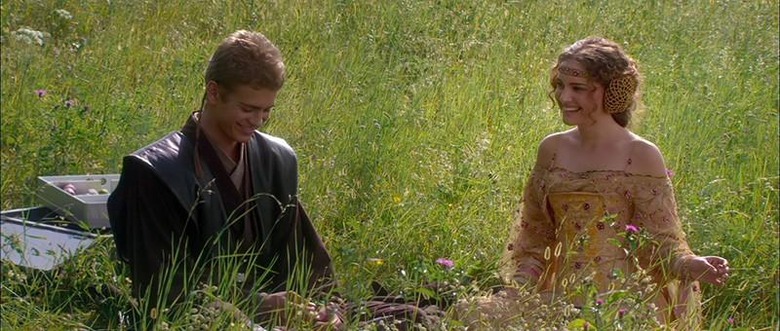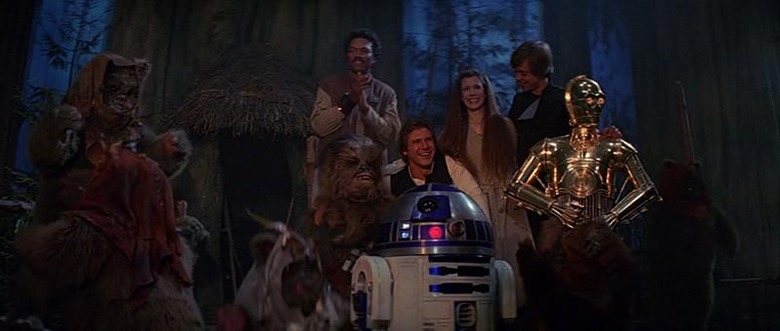Why Star Wars: Machete Order is the definitive way to view the films
Over the weekend I hosted a Star Wars marathon at my place. I busted out my projector, and screened some of my favorite movies on a 100" wall for all of my friends. While being surrounded by friends who all riffed on the movies with me was nice, and the giant screen provided a theater-like experience for me, that's not what made this viewing different for me. Rather, it was the order in which we all watched them. Specifically, the Machete Order.
What is the Machete Order, you ask? Back in 2011 a guy named Rod Hilton made a post on his blog, analyzing the ways to watch the Star Wars films. Back then, there really were only two ways to watch them: The release order, and the chronological order. But why not mix up the movies? He did just that, and came up with what he considered the perfect sequence. He dubbed this the "Machete Order." Why that name? Well, his blog is named "No Machete Juggling".
I've heard people talk about this particular order for years, but while I thought it was interesting, I didn't really think that it would really make all that much of a difference. After all, I've seen the original trilogy more times than I can count, and I've given the prequels a fair number of viewings. But when the final credits rolled on Jedi, I realized that I felt like I really had experienced the movies in a different way.
The difference comes with the way the information is presented to you on-screen. So let's start with the order that the films are shown. The Machete Order is as follows: IV, V, II, III, VI.

The first thing you'll notice is that Episode I is not listed, and that is correct. There is no good place for it to fit into the order, and when you think about it, you can leave it out without really losing anything valuable. Yes, we miss out on both Qui-Gon and Darth Maul, which is a bit sad. But at the end of the day, they don't end up contributing much to the story.
What I really like about omitting Episode I is the fact that instead of showing us the early days of Anakin, and the battle with the Trade Federation, they are simply alluded to. It's not that we don't need to know that story, but think about the first time you watched A New Hope. You immediately knew that there was a great backstory, but it didn't need to be told in order for you to enjoy it. When you get to Episode II, you have that same feeling. But now I'm getting ahead of myself.
The Order starts with IV. This was our first introduction to the world of Star Wars, and it does a fantastic job of setting things up. We get an introduction to the characters, the force, and the struggle of a rebellion against a galactic empire. There are secrets still to be revealed, and by placing this film first, none of that is spoiled. Darth Vader is just a mysterious bad guy, and Luke's dad was a great star pilot, and a good friend (and he never uttered the words "yippee!" or "now this is pod racing").

Next up comes V. The Empire Strikes Back is largely considered the best, and darkest of all the Star Wars films. There's really no reason to put any other movies before it, as it flows nicely from A New Hope. The prequels would have spoiled the fun of watching Yoda play the fool for Luke, and finding out that Darth Vader is really Luke's dad. At the end of the film, we're all in a pretty bad place. Han is frozen and in the hands of Boba Fett (who remains mysterious at this point), and our hero not only has his fighting hand chopped off, but his father is the baddest guy in all the land.
The third movie is where we take the big detour. We head back to Episode II, to find that Obi-wan was at least partially telling the truth, as he fights along side, and trains Anakin Skywalker. This is where things really changed for me. Going from watching Darth Vader chop his son's hand off, to joking with Obi-wan was almost jarring, but in a really good way. I've known that's how things went for years, but having his history directly in front of me after Empire was almost emotional. Here I was finding myself relating to a character that a half hour ago was the most evil guy we'd seen thus far.
With Attack of the Clones, we're able to see Vader as a youth, learning the ways of the force from Obi-wan and the rest of the Jedi Council. We can already see some of the underlying character traits that could lead him down that dark path, but really he's just a bit of a whiny teenager that's pining over a girl. It's at this point that you're also realizing just how similar father and son are. We also get some much-needed character development for both Obi-wan, and Yoda. Not to mention just seeing how different the universe appeared to be during the age of the Republic, and the Jedi Council.

Next up is Episode III, which brings us the fall of Anakin Skywalker. We finally understand the manipulation that lead him down the path to the dark side. While we watch him do horrible things, we also see that all along, he was doing things for love. So now Vader is no longer just some evil guy that does evil things because he's evil. No, he's a misguided man who wanted to protect the love of his life, while being manipulated by someone far more terrible than we could even imagine back when we were still watching Empire.
We now know how the Republic turned into the Empire, and why the jedi are "all but extinct." This does rob Return of the Jedi of one big twist, however. And that's the reveal that Luke and Leia are siblings. I actually prefer it this way, however. Rather than just watching Luke figure it out, we're shown that Luke does have a sibling, which isn't even hinted at before this. We've watched four movies, and we've got no idea that Luke has a brother/sister. And out of left field, it's Princess Leia. And with that excitement, we get to see Vader take his first breath, which still sends chills down my spine.
So Padme dies, the Empire is formed, and the Death Star is being created. Somehow we're actually ending on a bigger downer than when we left off of the original trilogy. And I love it. If you watch in the chronological order, you don't get some happy resolution with A New Hope. And if you watch it in the release order, you end your viewing on that downer. Neither is really a good way to go about things.
Finally, we bring things to a close with Episode VI. We've seen the fall of Anakin Skywalker, and have seen the hell he's put the galaxy through (not to mention his own kids), and we're seeing Luke come into his own as a Jedi. We're given the information that Luke and Leia are siblings, which doesn't really have the same punch, but again, I'm okay with that. All that's left now is to take on Vader and the Emperor. Cut-and-dry, right?
Since we just got done watching Anakin fall to the dark side, you don't go into Return of the Jedi thinking that you want to see him get killed along with the Emperor. You're now more conflicted, because like Luke, you know there is good in him. The showdown happens, and as we all know, Luke gets through to his father, Vader turns back to the light side, and fulfills the last of the prophecy. He destroys the sith. Cue dancing ewoks, show blue glowy Anakin, roll credits. Everyone's happy.

Sure, the people that benefit most from this order are those who have never seen the films. However, even those of us that have watched them a hundred times manage to get new perspective. The order in which information is shown on screen does manage to evoke different feelings, and allow us to see the motivations of characters in a new way.
If you're going to marathon the movies, this is definitely the way to do it. Especially if you've never given it a shot. And it has the added benefit of being a little over two hours shorter than the other two ways, since you leave out The Phantom Menace. You've only got a short amount of time until The Force Awakens...awakens. If you're going to watch them, now is the time.
